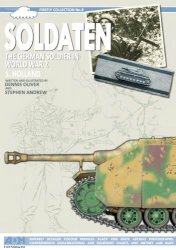The Upper Palaeolithic cultures of South India are distributed in a wide range of ecozones. Although, the Terminal Pleistocene was a period of greater aridity in South Asia, evidence from the Kurnool caves as well as from other sites in the Krishna and Godavari valleys indicates a grassland ecosystem with forest cover, swamps, and pools. The same pattern of tropical semi-arid monsoon climate is thought to have prevailed in southern India during this phase. Faunal remains from the Kurnool caves with Rhinoceros kar-nuliensis, Boselephas tragocamelus, Gazella gazella, Antelope cervicapra, Tetraceros quadricornis, Cervus unicolor, Axis axis, and Tragulus cf. memmina, point to scrub-to-tree jungle type of thick vegetation with open expanses of grasses and a source of water in streams. Cave sediments in the Kurnool region were deposited under somewhat humid conditions. Fluvial changes in river regimes have been documented.
A number of chronometric dates available from sites in India bracket this phase between 40kyr and 10kyr BP with regional variability. In South India dates from Nandipalle on freshwater gastropod shells are 24 260 ± 600, 710 and 17390 ± 10%. Burnt clay samples from a fireplace in the Upper Palaeolithic levels at the cave site of Muchchatla Chintamanu Gavi II gave a TL date of 17390 ± 10 BP. A date from Dharmapuri, Tamil Nadu, on freshwater shells is around 25 160 ± 850.
Sites are distributed all over southern India, with once again a few noted in Tamil Nadu and none in Kerala. In the Gunjana complex, sites occur as surface scatters, but excavations at Vodikallu revealed that artifacts occur in a fine loam possibly deposited by a sluggish stream, which covered cultural material lying exposed on the adjacent land surface. In the Rallakalava complex, artifacts occur on the eroded surface of the first aggradational terrace of the stream, and sites are found in association with sands. At sites in the Shorapur Doab, a black brown silt with lenses of loose pebbly granular gravel yielded blade tools. The best-known complex of sites lie in the Kurnool karstic cave complex, where Muchchatla Chintamanu Gavi (MCG) was excavated as also were Billa Surgam and Kottala Polimera Gavi. The MCG complex yielded the best evidence of the Upper Palaeolithic, both within caves and in the surroundings. Here, Upper Palaeolithic tools were noted below an upper cave earth in brown and chocolate brown poorly sorted deposits consisting of rockfall in a brown clayey sediment resulting from disintegrated limestone bedrock. Upper Palaeolithic site sizes vary greatly, and extend up to 20000 m2 as seen in the southeastern fringes of the Eastern Ghats. In the Eastern Ghats, the sites are concentrated around riverine zones, marked by high artifact densities pointing to long-term occupation. Siliceous raw materials as well as quartz were now preferred, although fine-grained quartzites continued to be used. Regional variability is marked. In the Rallakalava complex, fluted cores and tools on blades are noted along with cores, scrapers, and choppers. The distinctive features include large-sized blades and blade tools and robust burins. Along the eastern coastal plain, the blunted backed blade element forms a significant part of the tool kit at some sites. Variability is also seen in the form of a tendency toward micro-lithization at some sites, indicating a trend toward the Mesolithic. In the Eastern Ghats, the blade tool complex comprises long parallel-sided blades, irregular blades, flake-blades, flakes, burins, borers, blade and flake cores, and debitage. The predominance of unmodified blades, flake blades and flakes, and the presence of an amorphous element are notable, with a low backed blade component. In the southeastern outliers of the Eastern Ghats, irregular and pointed blades, scrapers on blades, and flakes, denticulates, horse hoof scrapers on blade cores, prismatic curved back points, backed knives, macro lunates, macro triangles, and burins predominate. The burins, backed blades, and end scrapers are refined and are almost microlith-ic in form. Here, the presence of bored stones (possible net sinkers) and grinding slabs is notable. The sites of Salvadgi and Meralbhavi in the Shorapur Doab, Karnataka, are termed as workshops with two distinct stone working traditions: one characterized by manufacture of scraper-point-borer category of tools on flakes and flake-blades and the other by the production of blade tools. In the Gunjana complex, manufacturing sites could be identified with a high percentage of cores and debitage, a predominance of backed blade variants and scrapers, and a few burins, with tools tending toward microliths and representing a possible Late Upper or Epipalaeolithic phase. Excavations at the site of Vodikallu in this region yielded grinding stones and rubbers which testify to processing of plant food. Within the Kurnool cave complex, excavations at MCG yielded a wealth of blades and blade tools, along with a significant component of bone tools including perforators (some with fire-hardened tips), scrapers, chisels, scoops, shouldered points, spa-tulae, worked bones, and bone blanks. This complex also has a paucity of retouched tools on blades or flakes, while backed blade variants, several burin types and other forms are absent or rare; and the culture is assigned to an incipient facies of the Upper Palaeolithic. In terms of behavioral implications, it was suggested that the cave was possibly neither a kill site nor a permanent settlement, but a transient camp, used when it received sufficient light. The scatters of sporadic artifacts in the surrounding region suggest a nomadic lifestyle. Ethnographic parallels are drawn on to explain seasonality in movement across this landscape.




 World History
World History









